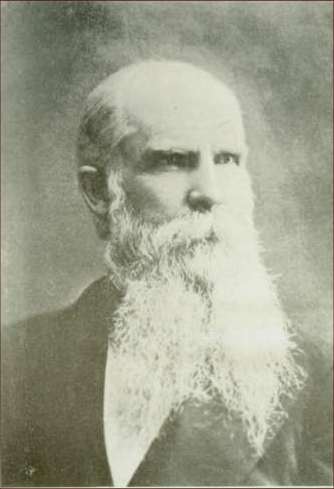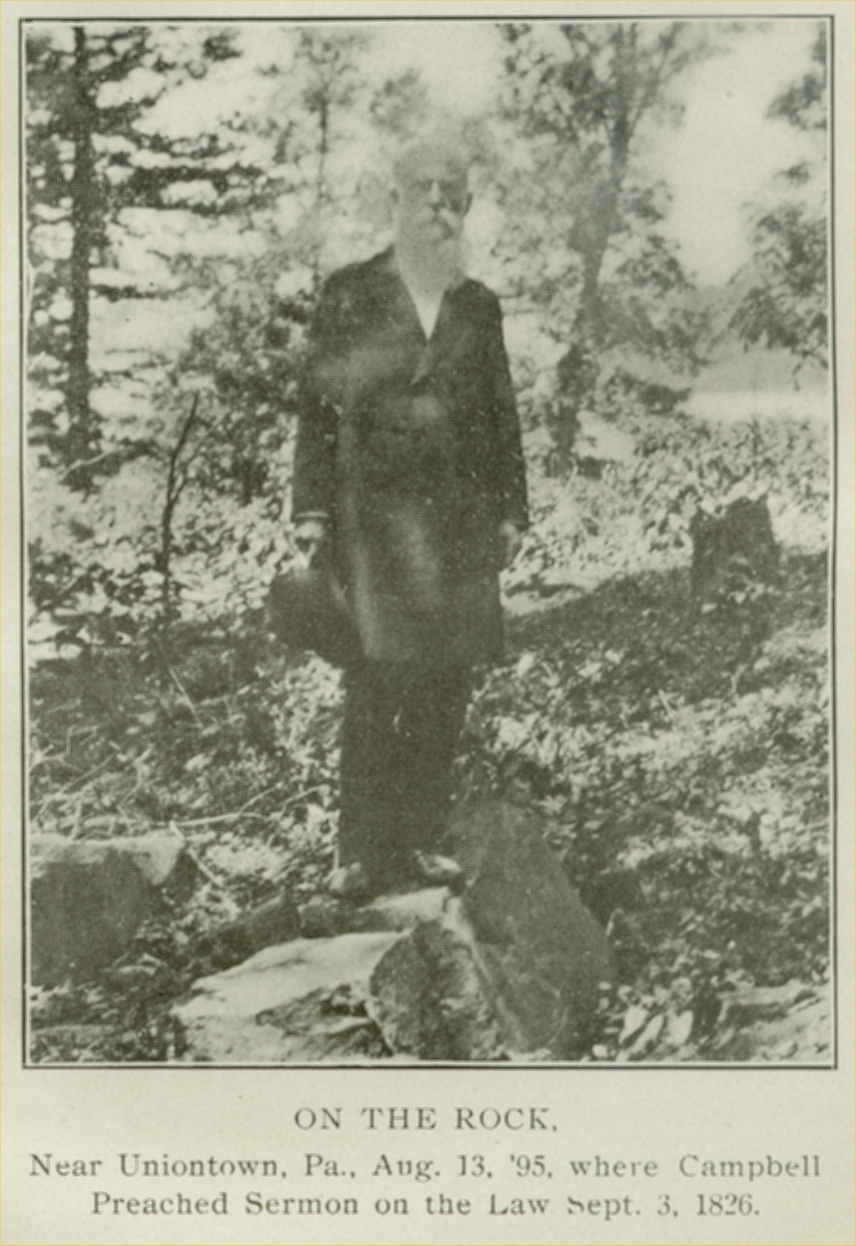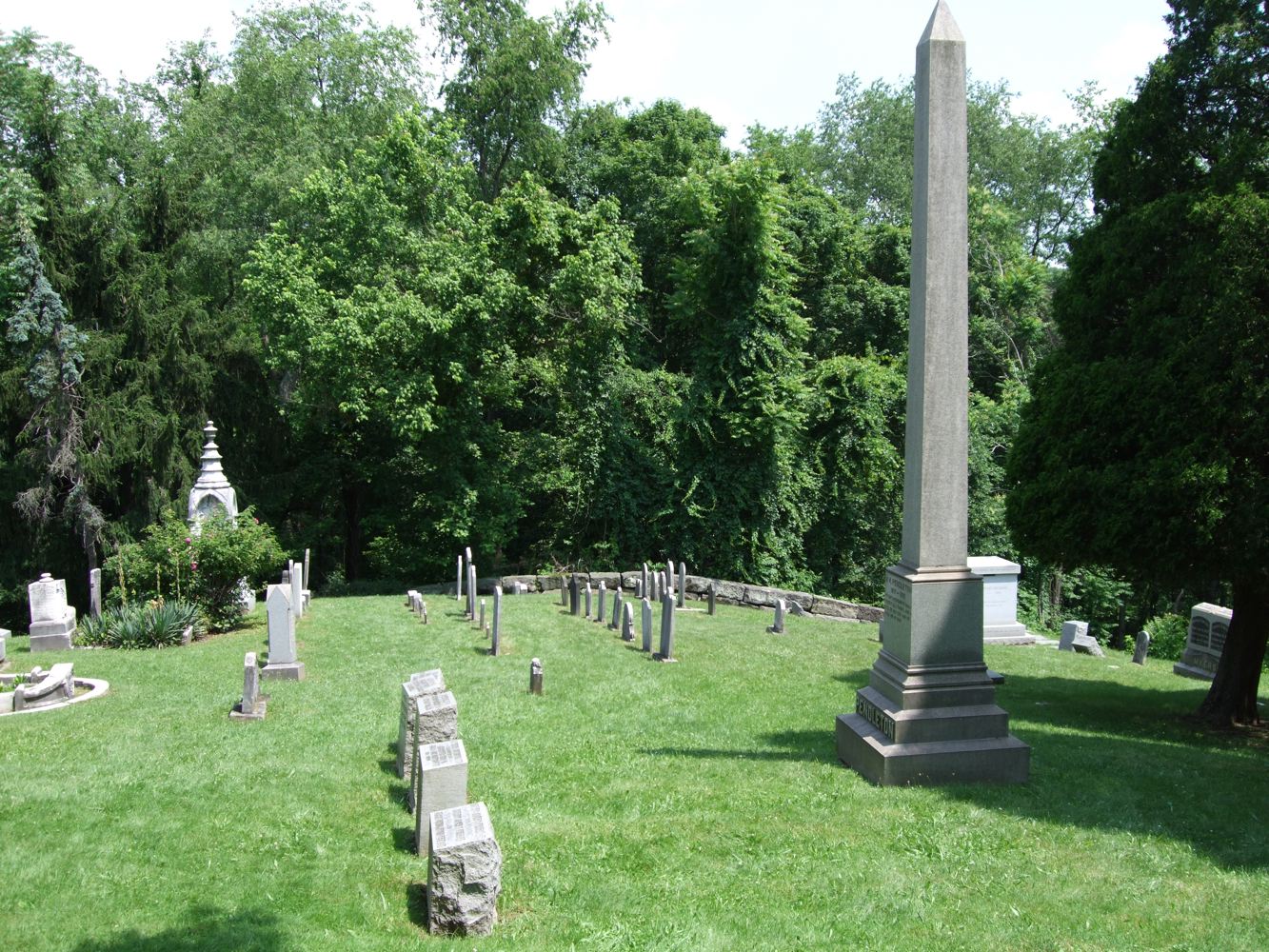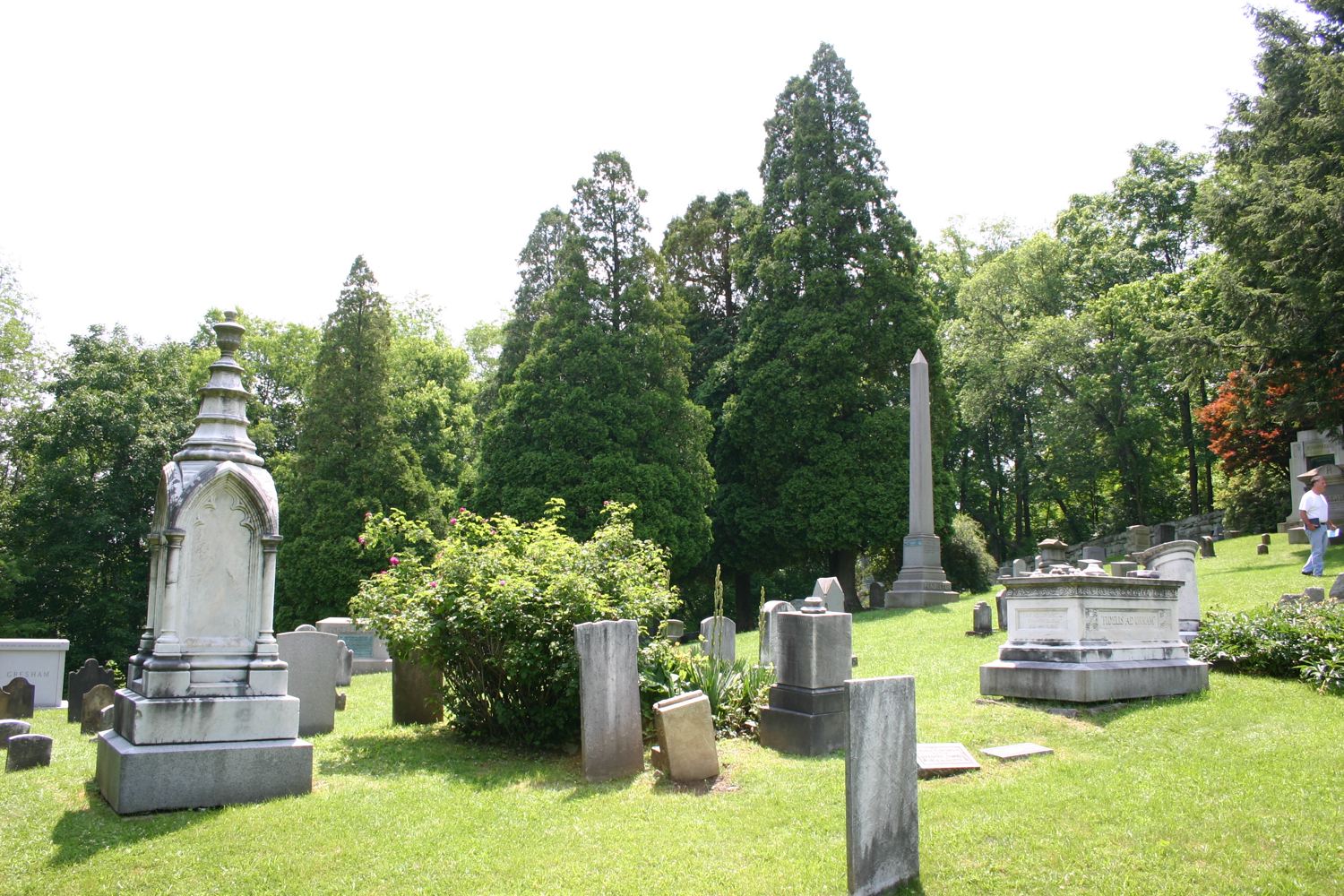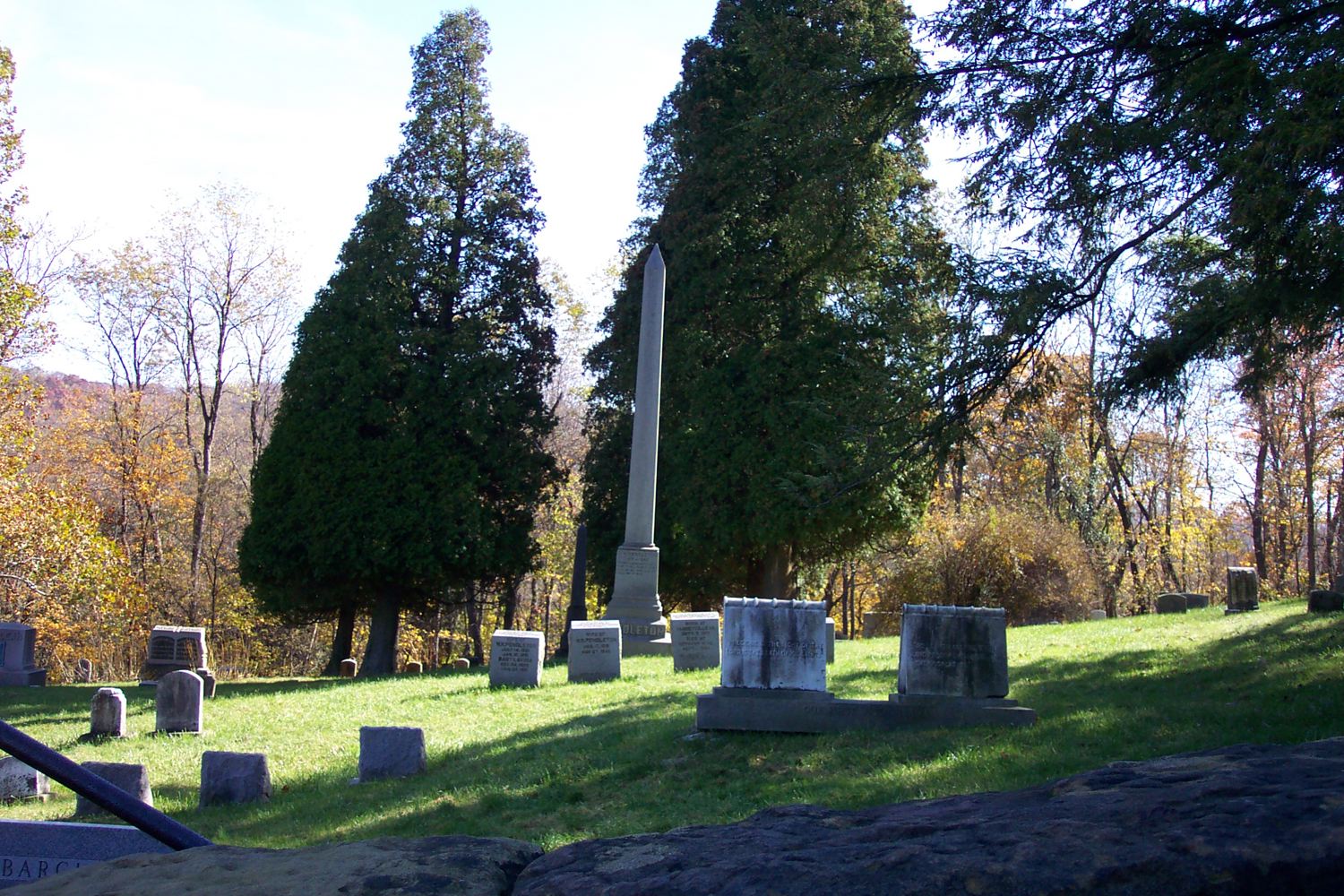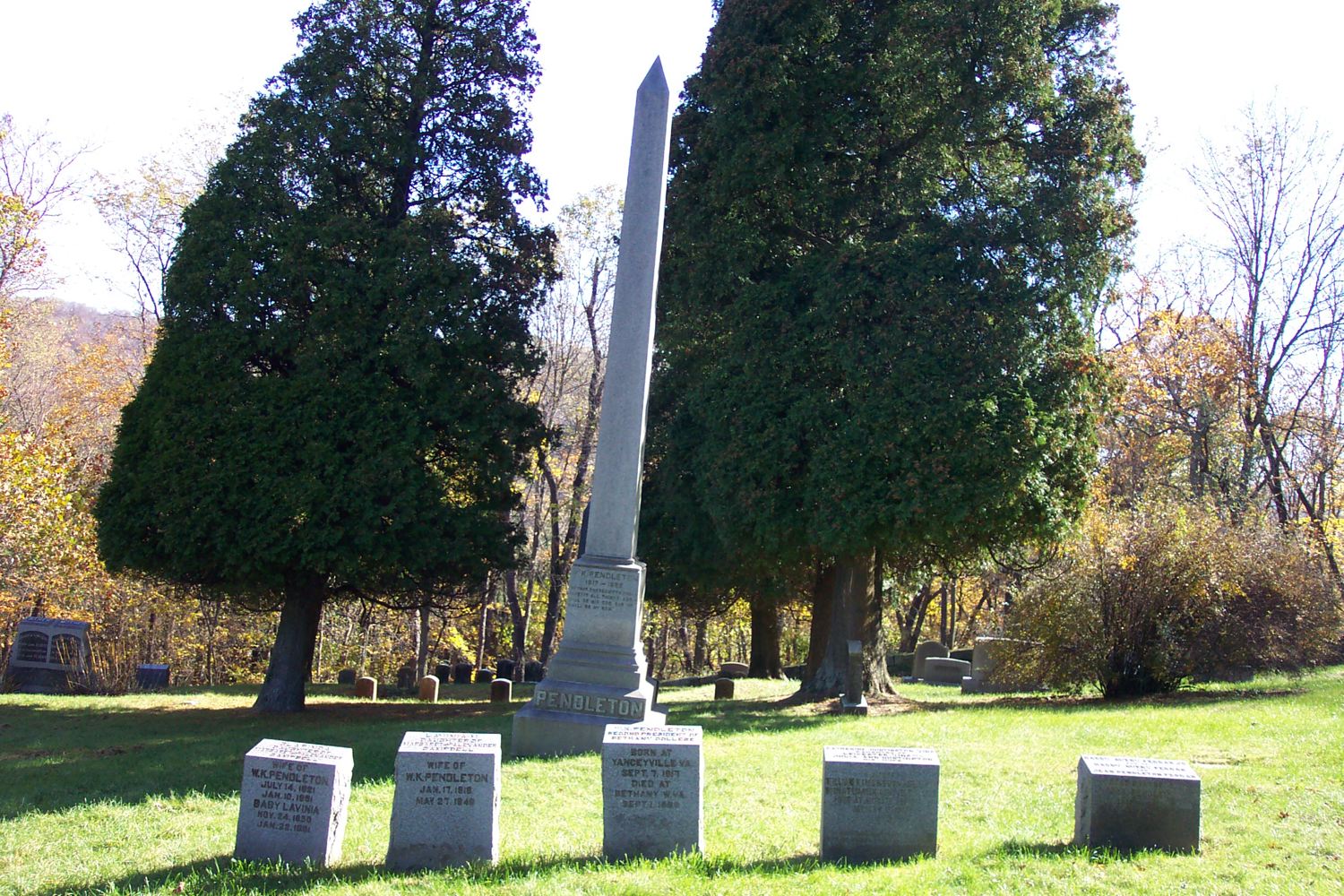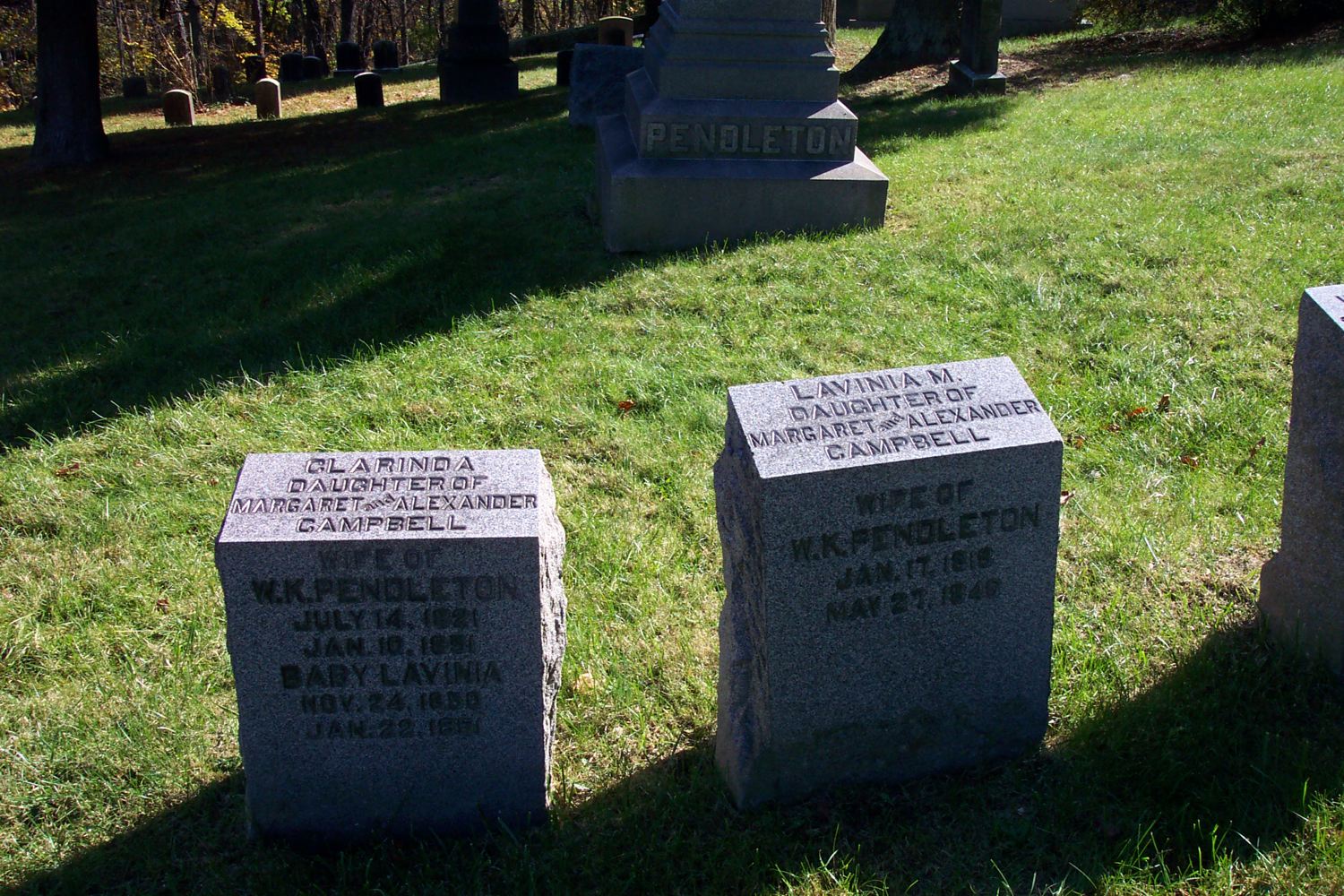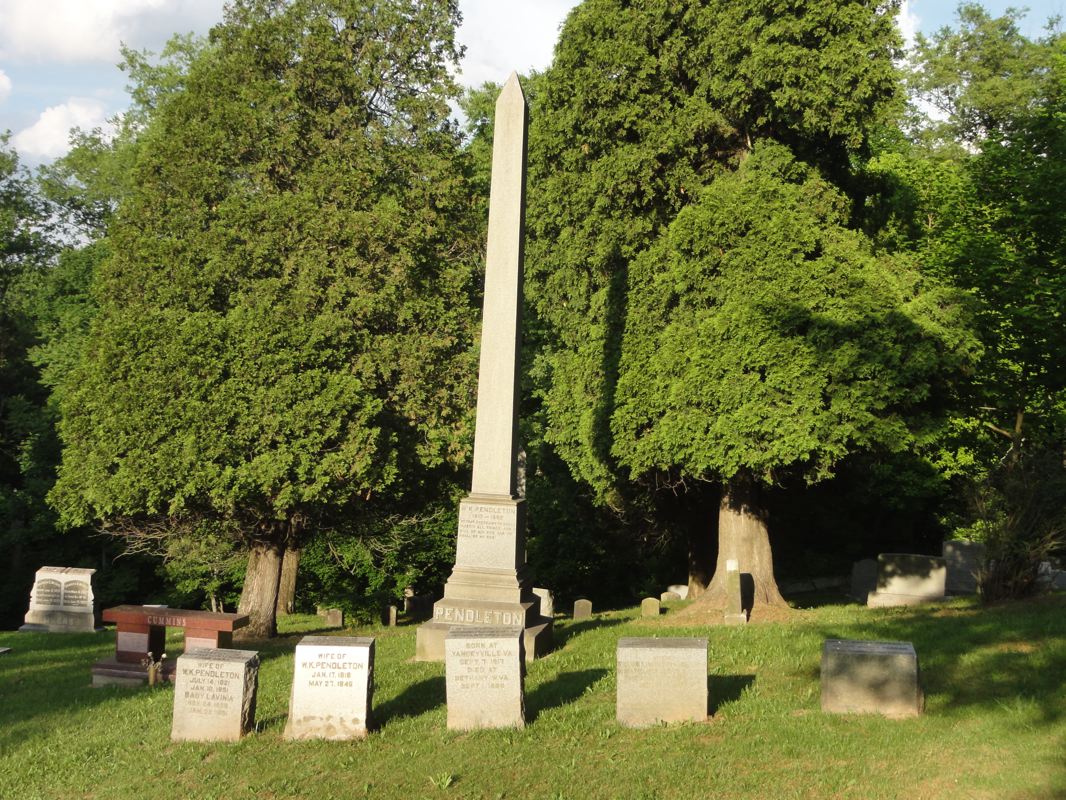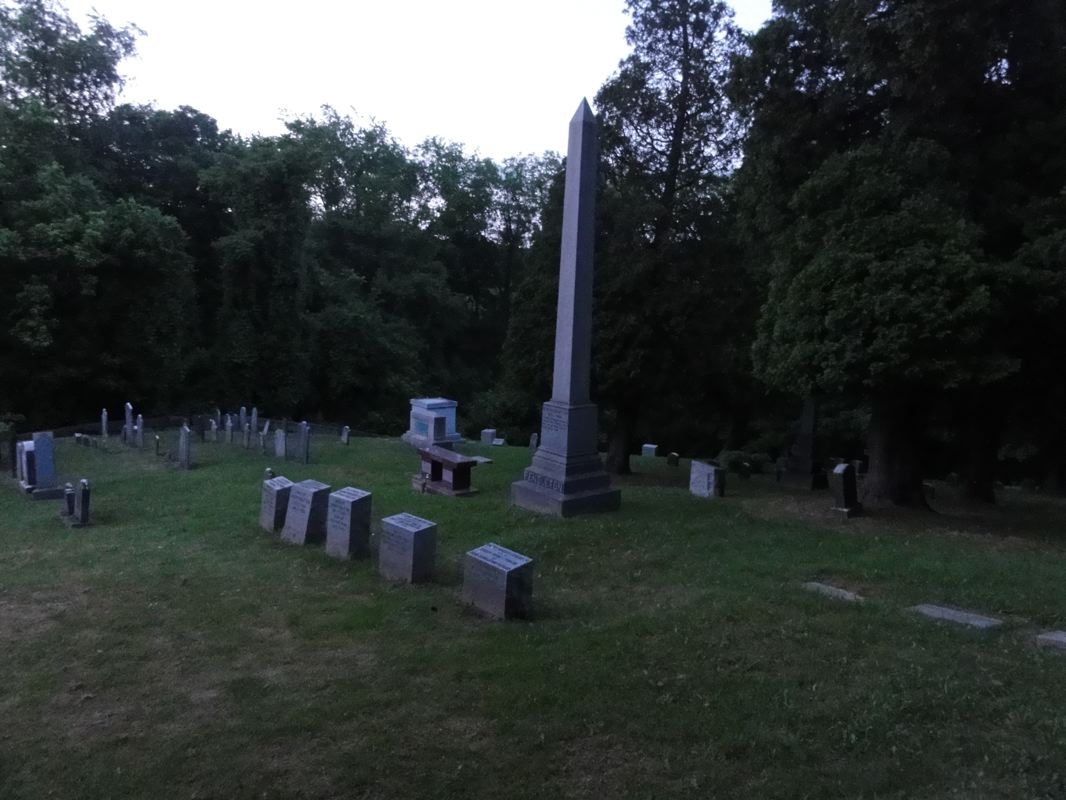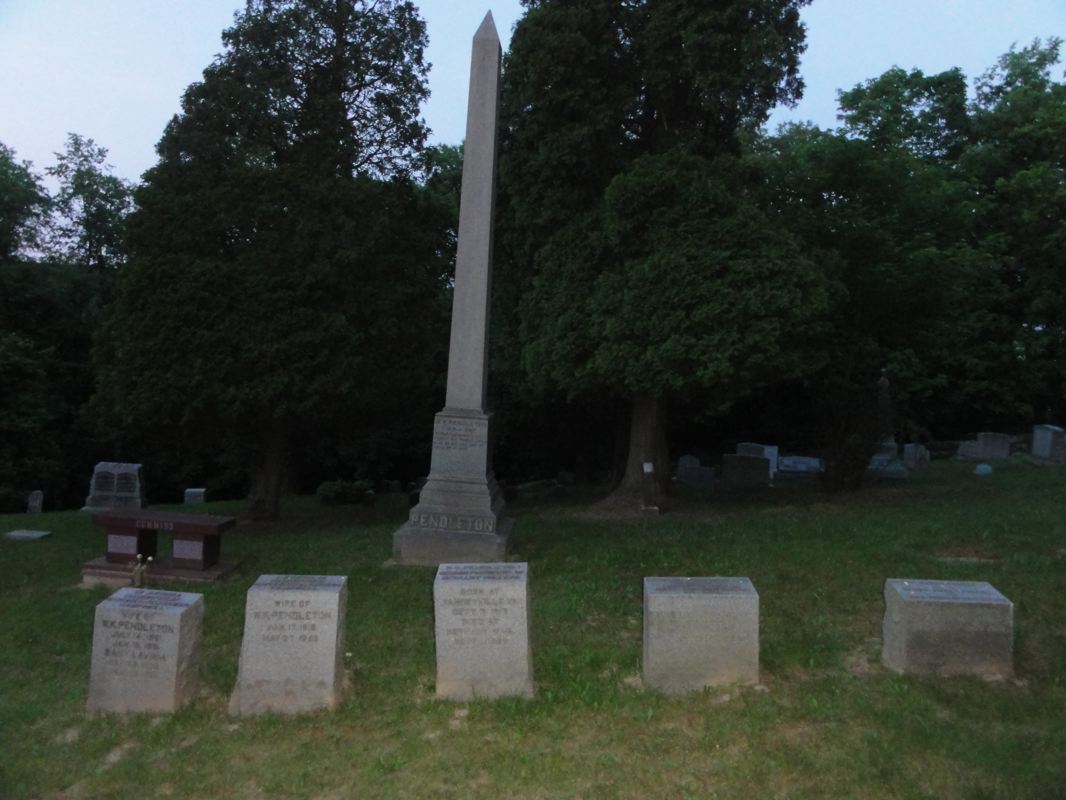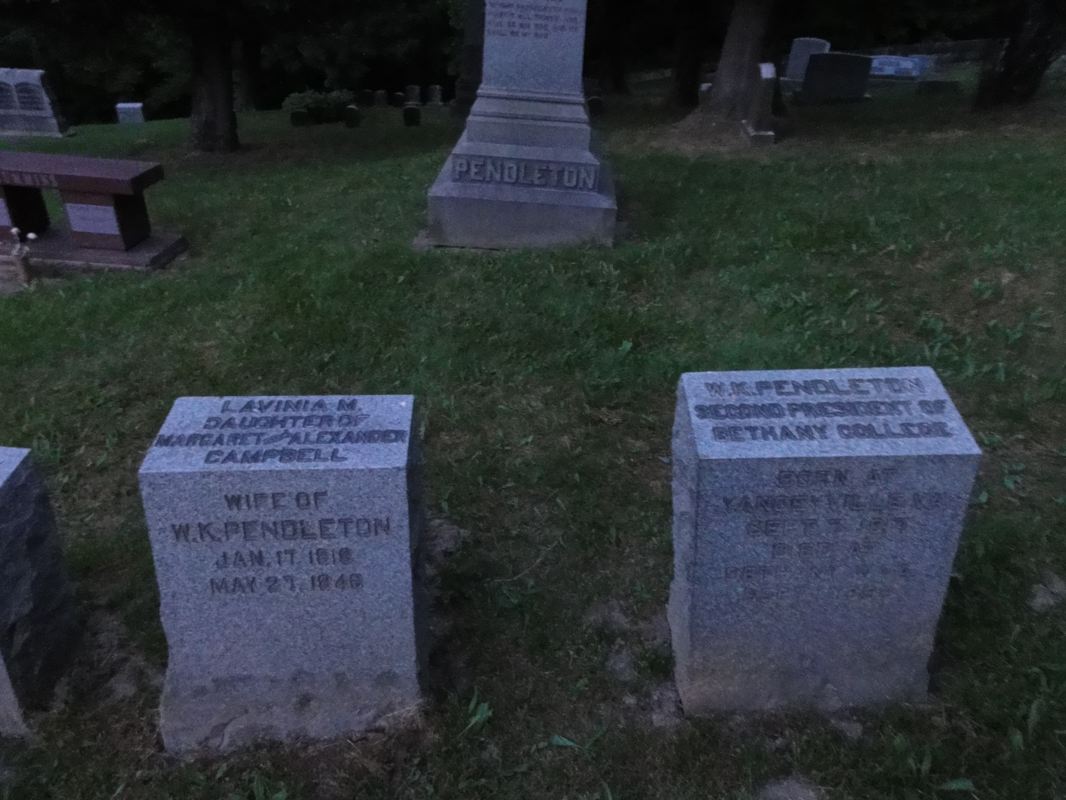William Kimbrough Pendleton
1817-1899
Biographical Sketch On The Life Of W.K. Pendleton
One of the most influential of the pre-Civil War preachers and pioneer leaders was W. K. Pendleton. Certainly there were few more talented than he. He had a broad cultural background and an educated mind that enjoyed to its fullest the finer productions in literature and learning. J. W. McGarvey once spoke of Pendleton as one of the clearest headed men he had ever known.1 McGarvey had met Pendleton when the former entered Bethany College in 1847. Very often did he have private counsels with his teacher. Consequently, McGarvey said that on a great many of the important questions he had been forced to consider he had been influenced by Pendleton's private counsel more so than that of any man. Pendleton, in his manners was always dignified, courteous and graceful. He was rarely known to get unduly excited. His broad knowledge and calm, deliberate consideration of every issue made him a natural leader in the earlier days of the restoration.
Pendleton was born of the old Virginia aristocrats. His father was Edmund Pendleton and his mother was Unity Yancey Kimbrough. His ancestral history reads of heroic achievements and strong courageous leadership. His mother was an Episcopalian, but his father claimed no religious affiliation until about 1833 when he became intensely interested in the writings of Alexander Campbell. After being baptized, he continued to plead the cause of restoration. When young Pendleton was an infant, his parents moved from Yanceyville out to a home built by his great grandfather, Henry Pendleton. The name of this old home was, oddly enough, Cuckoo.
When W. K. Pendleton was thirteen, he and his younger brother entered the school of Jeremiah C. Harris who in those days was looked upon as the prince of the pedagogues. After finishing here, Pendleton went to a classical academy conducted by W. G. Nelson. After a few sessions here, he entered the school of David Richardson, a teacher of mathematics and astronomy. From here, Pendleton enrolled in the University of Virginia to put the finishing touches on his education.
Across the front of one of the stateliest buildings at the University of Virginia were printed these words: You shall know the truth and the truth shall make you free. Pendleton was one of two hundred and sixty-five students who looked at these words in the fall of 1836 upon enrolling in school. He began a study of law as he dreamed of becoming one of Virginia's great statesmen.
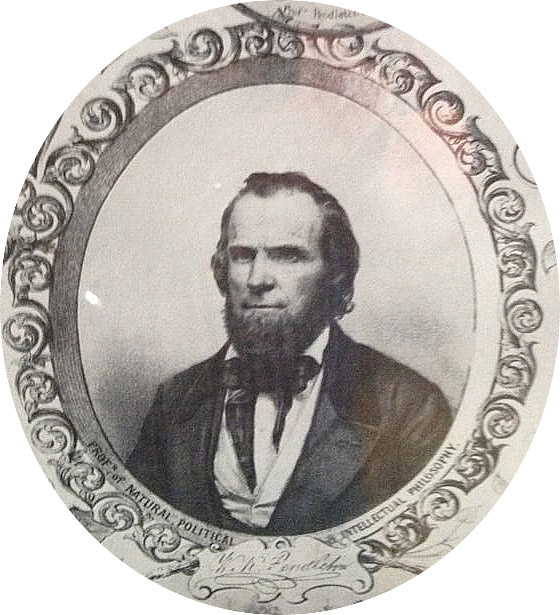 Two years before Pendleton attended
the University, his father and mother, and his older brother, Madison, all had
become interested in the writings of Alexander Campbell and were baptized. They
formed the nucleus of a small congregation near Cuckoo called Mount Gilboa in
Louisa County. It was only natural that while W. K. Pendleton was in the
University, he should devote some of his time to reading the Millennial
Harbinger as well as some of the older copies of the Christian Baptist. These,
along with the Bible, gave him his religious instruction. Until the Spring of
1840, then Pendleton continued his study of law at the University, and his
search for truth religiously.
Two years before Pendleton attended
the University, his father and mother, and his older brother, Madison, all had
become interested in the writings of Alexander Campbell and were baptized. They
formed the nucleus of a small congregation near Cuckoo called Mount Gilboa in
Louisa County. It was only natural that while W. K. Pendleton was in the
University, he should devote some of his time to reading the Millennial
Harbinger as well as some of the older copies of the Christian Baptist. These,
along with the Bible, gave him his religious instruction. Until the Spring of
1840, then Pendleton continued his study of law at the University, and his
search for truth religiously.
It was the custom of Alexander Campbell to travel extensively and preach in addition to editing the Millennial Harbinger. His tours took him over a wide range of territory, and very frequently t hey took him to Virginia. Quite often, Campbell would take one of his daughters with him on these trips. Campbell's daughter, Lavina, was a young lady of great beauty and an unusual buoyant personality. She came with her father to Charlottesville, Virginia in 1838. Pendleton, while a student at the University there, lived with an aunt, Mrs. Lucy Pendleton Vowles. When Campbell and his daughter made their first public appearance in town, Pendleton was at home in bed sick. The boys at the University attended and saw Campbell's daughter. They came to Pendleton's bedside and joked with Pendleton and told him of her beauty. Pendleton joked back, assuring the boys he would get well, meet Lavina, and beat them all out yet. He lived to accomplish this feat.
Pendleton left the University in the spring of 1840 and came back to Louisa County. In June that year he listened to Campbell preach, and was baptized by Campbell near the Mount Gilboa Church. Meanwhile, he had won Lavina's heart and the two were making plans to marry. On October 14, 1840, they were married. The ceremony took place in the Campbell mansion at Bethany-in the same room where Alexander Campbell later died. Warwick Martin performed the ceremony.
By now, Pendleton had reached a crisis in his life. All of his plans and his education pointed toward a career in politics. Too, he had bright prospects in that field. He belonged to the Whig party. In 1840 he acted as a delegate to the Young Men's National Ratification Convention in Baltimore. This convention followed the Whig Convention and was to endorse the nomination of Harrison and Tyler as leaders on the party ticket. Here, Pendleton met and heard Henry Clay and Daniel Webster who were both present. Yet, notwithstanding bright political prospects, Pendleton was feeling the pull from the Campbells. Alexander Campbell recognized the ability of Pendleton. Plans had already been announced that Campbell was to establish a college at Bethany, and Campbell was anxious to have his son-in-law associated with him in this work. And so for a time Pendleton pushed his political interests in the background although he never quite freed his soul from a desire for a place in the political world.
Bethany College opened its doors in the fall of 1841 and Pendleton, along with Robert Richardson, was elected as a teacher in physical sciences. Meanwhile, Pendleton and his wife had moved to their home in Bethany. On Sept. 2, 1841, their first daughter, Campbellina, was born. This is the daughter who in later years was affectionately known as Miss Cammie. Around his house in Bethany Pendleton cared for his flowers, and in the college, taught his classes. His wife was of frail health, and undoubtedly brought many anxious hours to Pendleton. A few years passed, and she grew worse. On May 29, 1846 she died. The doctors called her trouble consumption. She was twenty-nine years old. Her body was borne to the cemetery at Bethany and laid to rest. On a slab over her remains were inscribed the words:
Beautiful in person, pure in heart, warm in her affections, ardent in her mind and ever ready to do good, her friends might well have prayed the good Lord to lend her a little longer to soothe and lighten the sorrows of earth; but He has taken her where there is fullness of joy, and though we raise this stone to her memory, we know she sleeps not here, but rejoices as an angel in the presence of God.2
The Trustees of the College met on August 13, 1845 and elected Pendleton to the office of vice-president. Campbell was gone frequently and the need of someone to take his place in his absence was evident. But during this time, Pendleton himself was sick often with dyspepsia. This, in addition to his wife's illness and his duties around the college, made the passing days more and more difficult. Early in 1846 Pendleton went to Philadelphia to consult a physician, and was advised to take an ocean voyage. Lavina's death that spring probably made the voyage seem more necessary so during that summer, Pendleton went to England. With him went Clarinda, another of Campbell's daughters, and a Mr. and Mrs. Semple of Pittsburgh. He returned from his trip somewhat refreshed.
Pendleton wanted to be released from some of his duties, but found more and more put upon him. In July, 1846, he offered his resignation to the Trustees of Bethany College, but it was promptly refused. Moreover, he was now acting as co-editor of the Millennial Harbinger, which position he began in January, 1846. During the months of May to October, 1847, Campbell was in England, and the editing of the Harbinger was left entirely to Pendleton. Pendleton now entered a period of intense activity. The paper and the college together allowed him little freedom. Moreover, plans were now developing for the establishment of the American Christian Missionary Society and Pendleton was to figure some in that. He attended the first convention in the fall of 1849 in the absence of Campbell who was sick.
In the summer of 1848 Pendleton had married his second wife. Again he chose a daughter of Campbell-Clarinda. In looks Clarinda was similar to Lavina, but was quieter and more reserved. This marriage, too, did not last long for in 1850 Clarinda also died. Pendleton's third wife was Catherine Huntington King of Warren, Ohio, whom he married on September 19, 1855.
His work with the college and the paper continued and as Campbell grew more feeble, Pendleton stepped into his place. In 1864 Campbell turned the Harbinger over to Pendleton who continued its publication until 1870 when the press of college duties made it imperative to cease its publication. After Campbell's death in 1866, the Trustees elected Pendleton president of the college which position he held until he was too feeble to continue it. From 1869-1870 he served as associate editor with W. T. Moore of the Christian Quarterly. During a part of this time, at the request of Isaac Errett, he wrote some for the Christian Standard. About 1875 he became president of the General Christian Missionary Convention. In 1884, with advancing age making the proper fulfillment of his duties impossible, Pendleton resigned as president of Bethany College. He was asked, however, to allow his name to stand as president. This he did and B. C. Hagerman was appointed chairman of the faculty for a year. At the end of the next year, however, he requested the Trustees to elect a president, which they did. W. H. Woolery was elected and thereafter, Pendleton was listed as president, emeritus.
Meanwhile, Pendleton's political interests never lagged. In 1855 he ran for Congress but was defeated. In the political campaigns of 1860 he supported Bell and Everett and ever after was a Democrat. After the War between the States, when the state of West Virginia was formed, Pendleton was called upon for active political services. Both the Democratic and Republican conventions of his district nominated him to be their representative in the state's Constitution Convention in 1872. The following year he was State Superintendent of Public Schools, which office he held for years. While Pendleton was acting as State Superintendent of Public Schools, the Governor of West Virginia requested him to select and suitably inscribe the West Virginia Memorial Stone for the Washington Monument in Washington, D. C. This stone may be found at the two hundred foot landing of the monument.
Pendleton's last years were spent in Florida, although he continued to make trips to Bethany. In March, 1886, he moved to Deland. Shortly after this, he bought an orange grove and small farm near Eustis. Here he continued to enjoy his books and visit with friends who stopped by. It was while he was on a trip back to Bethany that he passed quietly and peacefully away. It was September 1, 1899.
________________
1 J.W. McGarvey, W. K. Pendleton, Christian Standard, Vol. XXXV, No. 37 (September 16, 1899), p. 1193.2 J.D. Power, Life of W. K. Pendleton (St. Louis: Christian Publishing Co., 1902), p. 78.
- From The Search For The Ancient Order Vol. I, Earl Irvin West, G.A. Nashville, TN., 1974, pages 89-95
![]()
Another Sketch On More Pictures Here
![]()
Location Of The Grave
W.K. Pendleton is buried in God's Acre Cemetery in the remote hills of the panhandle of West Virginia. Access of approach to Bethany can be made four ways, one of which is not great if you are prone to car sickness. The approach from Wheeling, W.V. is very curvy, on Hwy. 88. Thus, it is better from Wheeling to go up Hwy. 2, following the Ohio River to Wellsburg. Turn right on Hwy. 27 and go around five miles and turn right on Hwy. 88. Access this way is straightest from Wheeling. Once arriving in Bethany, travel all the way through, passing the church building on the right, crossing Buffalo River/Creek, passing the soccer fields on the left, and continuing until you get to the Campbell Mansion. When you see the historical marker on the right, you should turn right, but keep to the left as you go up the hill toward God's Acre Cemetery. The cemetery is enclosed with large boulders. Enter the cemetery at the steps. The tallest monument in the cemetery belongs to the Pendleton family.
From Washington, P.A. - Take Exit 17/Jefferson Avenue on I-70, and head north, (away from Washington) on Hwy. 18/844. When 18 and 844 split, be sure to go left on 844. Go a few miles and turn left on Hwy 331/Brush Run Road. (There has for years been a red barn at the corner, making for a good landmark to know where to turn off Hwy. 844. onto Hwy. 331/Brush Run Road. Take 331 until it dead's end to Hwy. 231 where you will turn left. Hwy. 231 will dead back into Hwy. 331. Turn right and head into Bethany. The first glimpse of Bethany will be the old Campbell mansion on the right. Be sure to go through this house if possible. It is good to call ahead to make sure someone is able to show you through. You can not get in on your own. But, continue just past the mansion and turn left on the little road that give you access to the cemetery. Be sure to stay to your left as you make your way up the hill. The cemetery is enclosed with large boulders. Enter the cemetery at the steps. The tallest monument in the cemetery belongs to the Pendleton family.
GPS Coordinates
N40° 12.323' x WO 80° 32.806'
or D.d. 40.205368,-80.546667
Facing West
![]()
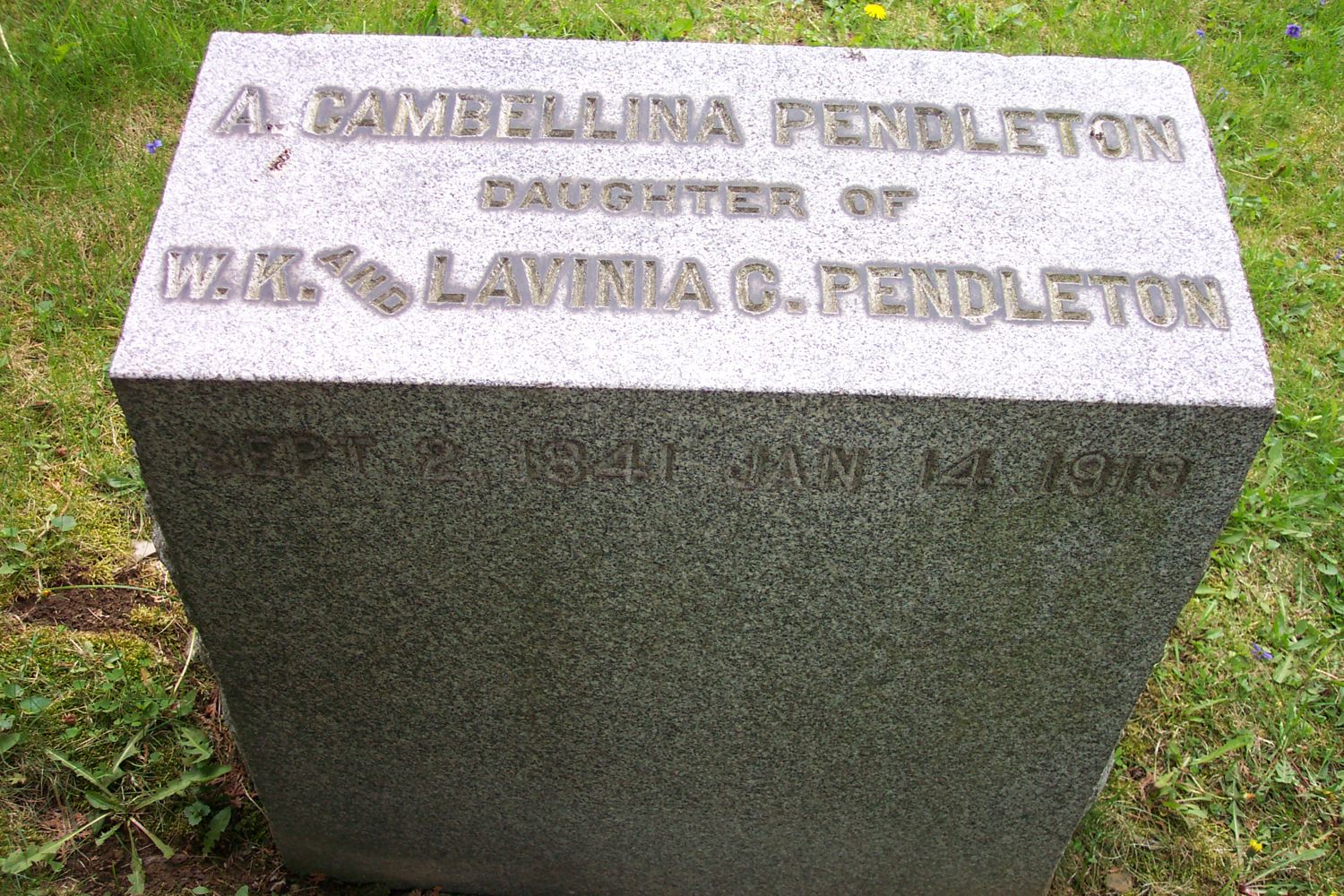
A Campbellina Pendleton
Daughter of
W.K. AND Lavinia C. Pendleton
September 2, 1841
January 14, 1919

W.K. Pendleton
Second President Of
Bethany College
Born At
Yanceyville, VA
Sept. 7, 1817
Died At
Bethany, W. VA
Sept. 1, 1899
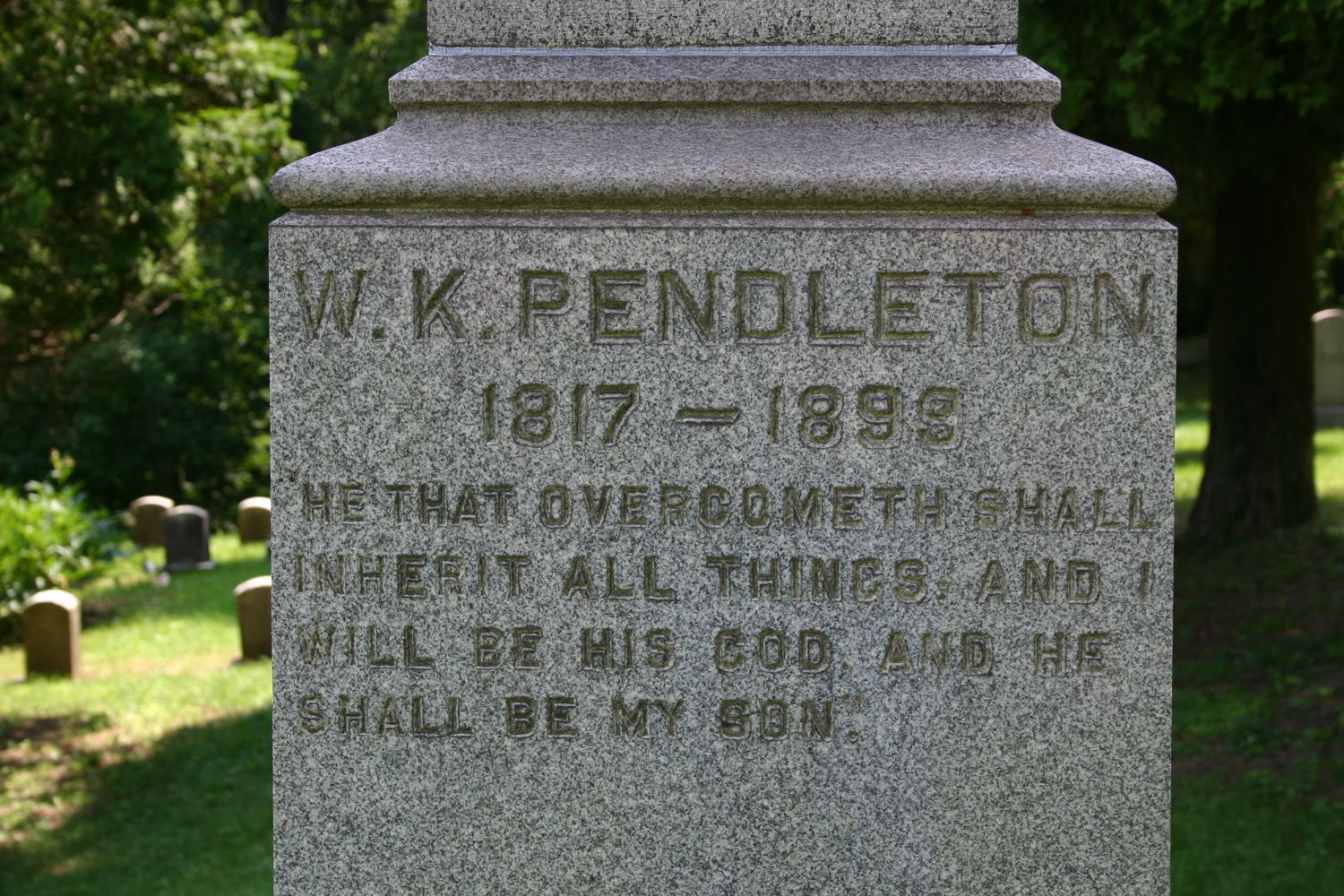
W.K. Pendleton
1817-1898
He that overcometh shall
inherit all things, and I
will be his God, and he
shall be my son.
![]()
One Evening At God's Acre
May 23, 2012
![]()
